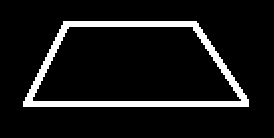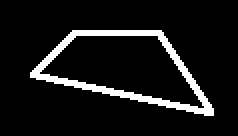
|
Arithmetic - Miscellaneous - Trapeziums
Trapeziums and Trapezoids
There is a little controversy concerning the definitions of trapeziums and trapezoids. Apparently in the United States they have the following definitions:
TRAPEZIUM - A four-sided shape with no parallel sides. TRAPEZOID - A four-sided shape with two parallel sides.
Although there may be widespread disagreement over the exact meaning of these two terms, few people waste time arguing about it. In fact, very few people are even aware of this discrepancy. Apparently the mathematicians of ancient Greece were the ones who first defined the two terms. They called four-sided objects with two parallel sides trapeziums and those without any parallel sides were referred to as trapezoids. Some guy named Hutton reversed these definitions in a book called "Hutton's Mathematical Dictionary" which was published in 1795.
Trapezium also is the name of a bone in the wrist located near the thumb. The term is also used to refer to a cluster of stars in the heart of the Orion Nebula. But most often it refers to a quadrilateral either with no parallel sides (in the USA) or with two parallel sides (outside the USA).
| PARALLEL SIDES: | NO PARALLEL SIDES: |
 |
 |
Click here to see Trapezium Demo
